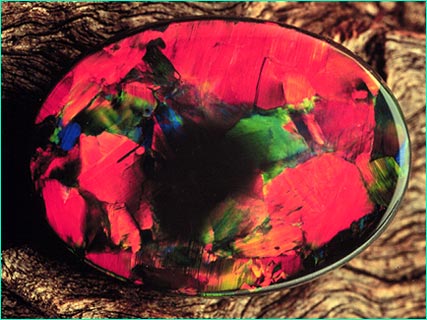|
|

Precious opal, as compared to common opal, offers the rainbow iridescence that has been so highly prized since Roman times. Australia boasts the largest opals: a 26,350-carat gem-quality white opal found in 1989, and a 1,982.5-carat gem-quality uncut black opal unearthed in 1986. (One carat equals one-fifth of a gram.) Class: sometimes considered precious Origin of Name: probably derives from the Sanskrit word upala (precious stone) Color: pale (white opal); clear (water opal); black, grey, or brown (black opal); yellow, orange, red (fire opal) Chemical Composition: silica with up to 10 percent water (in precious opal) Crystal System: non-crystalline or only poorly crystalline Hardness: 5.5-6.5 Specific Gravity: 1.98-2.20 Geographic Origins: Australia (white and black opal), Mexico (fire and water opal), Brazil, Guatemala, Honduras, Nevada, Oregon, Idaho Next Photo: ©International Colored Gemstone Association The Science Behind the Sparkle | Diamonds in the Sky A Primer of Gemstones | See Inside a Diamond Resources | Transcript | Site Map | Diamond Deception Home Editor's Picks | Previous Sites | Join Us/E-mail | TV/Web Schedule About NOVA | Teachers | Site Map | Shop | Jobs | Search | To print PBS Online | NOVA Online | WGBH © | Updated November 2000 |